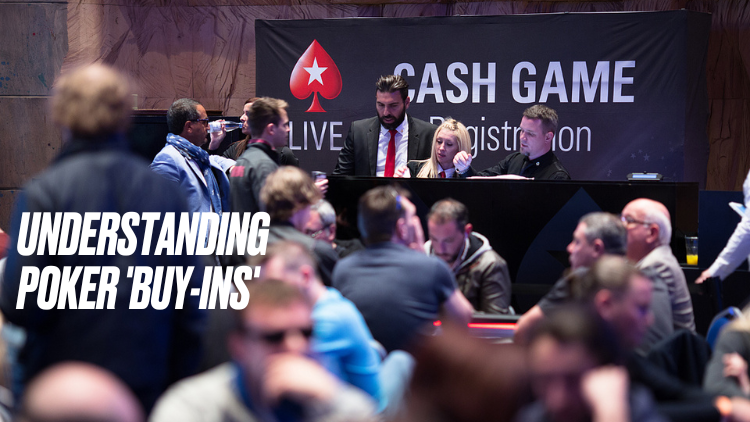Table of Contents
INTRODUCTION
Whether you’re playing a home game, a play money poker game online, or a major live poker tournament, the first thing you’ll probably want to know is “What’s the ‘buy-in’?”
But what about if you don’t even know what a “buy-in” is?
It’s one of those poker terms that gets used all the time even though it’s far from obvious for an absolute beginner what it means.
In this article, we’ll take you right back to the beginning and define the term “buy-in”, before looking at its application in tournaments and cash games, and outlining how a few key poker concepts are built around understanding the buy-in.
Even if you have a pretty good idea, it might be worth a quick refresh.
Bankroll management is crucial to becoming a successful poker player, even if your ambitions are purely to play the game for fun. Understanding the role of the buy-in is an important step towards good bankroll management.
WHAT IS A “BUY-IN” IN POKER?
The easiest way to understand a buy-in, particularly in a tournament, is to think of it as the entrance fee, the amount of money you need to sit down at the table.
When you pay your buy-in, you get given a set number of chips with which you now make all your bets. Your buy-in pays for this initial starting stack, but the chips have no cash value. They are purely betting tokens, for the purposes of this game, and have no intrinsic value outside of the tournament.
So, in a tournament with a real money buy-in of $10, you’ll need to pay $10 to get your starting chips. If the buy-in is $1,000, it’s going to be $1,000. If it’s 1,000 play-money chips, you’ll need 1,000 play-money chips.
So far, so obvious.
However in a cash game, the buy-in is usually listed as a range. There’s a “minimum buy-in” and a “maximum buy-in” listed on each table and, and you can enter the game by paying any amount up to, and including, those figures.
This buy-in will be linked to the size of bets in the game in question. For instance, in the PokerStars lobby, you can find a $1/$2 no limit hold’em cash game, for which the buy-in range is $80-$200. (See picture below.)
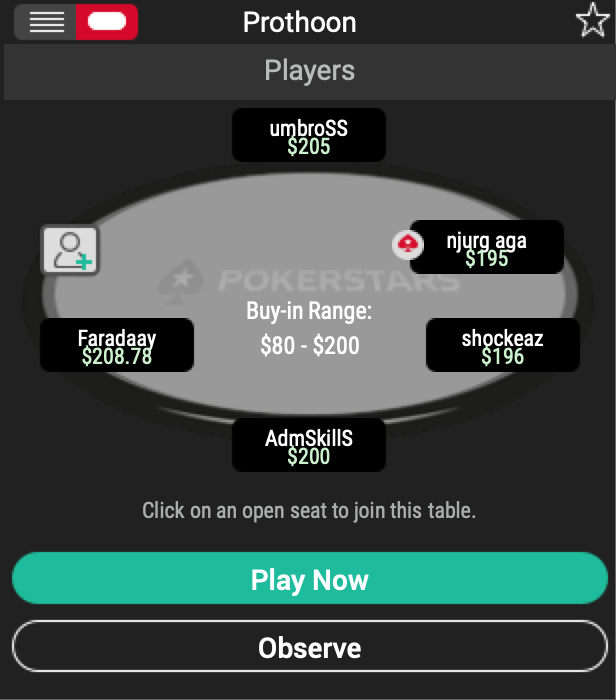

A $1/$2 game with buy-in range of $80-$200
That means that the small blind and big blind in this game are $1 and $2, respectively, and you can sit down with any amount of money between $80 (the minimum) and $200 (the maximum). That means you’ll join the game with between 40 and 100 big blinds in your stack.
Similarly, there’s a $25/$50 game with a buy-in range of $2,000-$5,000. It’s the same 40-100 big blind ratio as in the smaller game. (See picture below.)
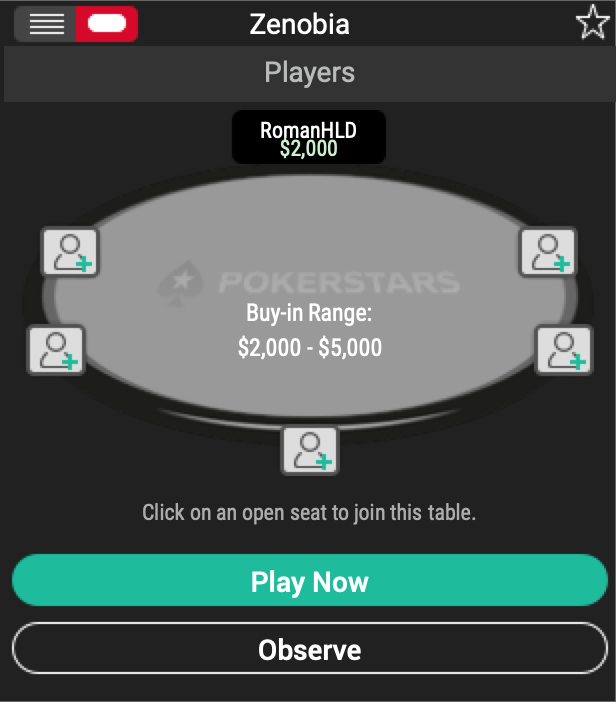

A $25/$50 game with buy-in range of $2K-$5K
Remember, in a cash game, the chips in front of you represent a real cash amount and you can usually walk away and cash out at any time. You can also top up your chips — pull out another buy-in perhaps — if your stack takes a hit, or you lose it entirely.
BUY-INS IN DIFFERENT POKER GAMES
As we have seen, tournament buy-ins are a straightforward affair. The entrance fee is clearly stated and you choose whether to pay or not. The only other factor you need to consider is whether the tournament allows re-entries or re-buys.
If it allows re-entries or re-buys, it means that eliminated players can dig out another buy-in and rejoin the fray. Some tournaments have a limited number of permitted re-entries, while some are unlimited.
Either way, your buy-in is fixed. It’s X amount of money for Y amount of chips.
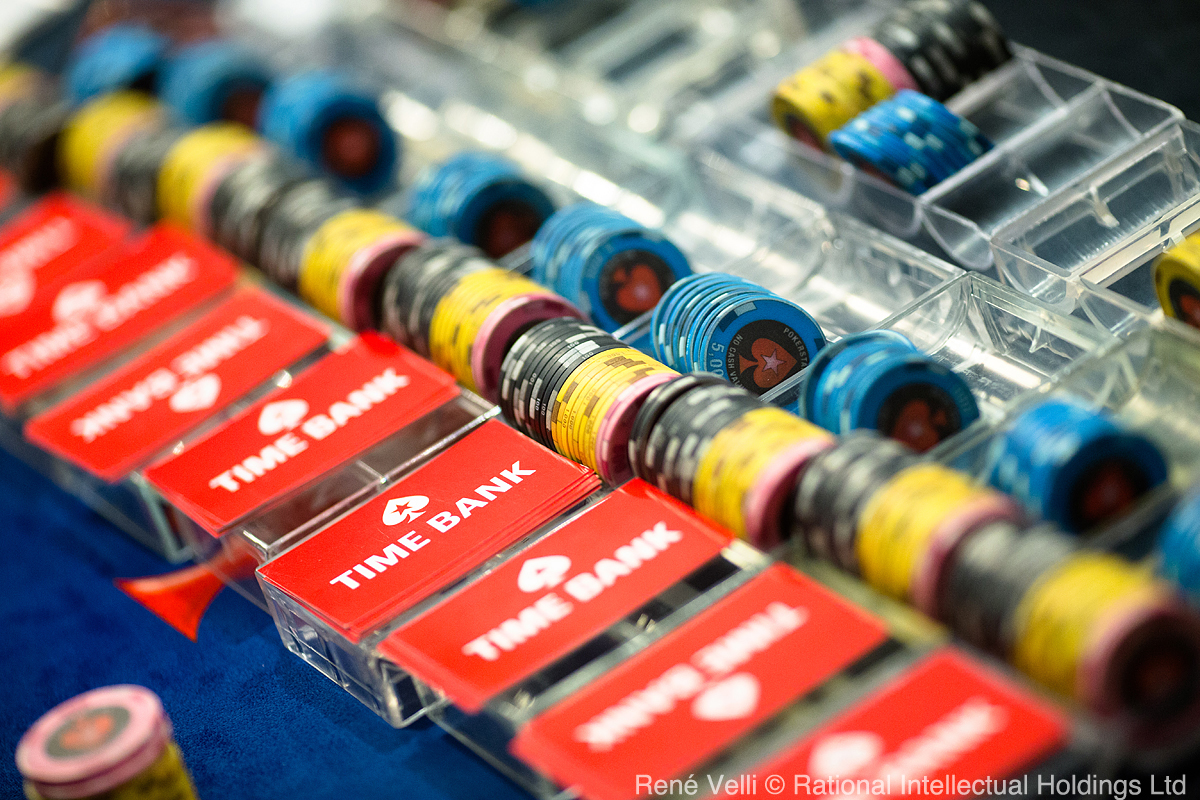

Starting stacks are the same regardless of buy-ins
In cash games, however, the size of the buy-in might vary depending on what type of game you’re playing, and what betting format is being used.
Taking just hold’em, you might be playing limit hold’em, pot limit hold’em or no limit hold’em games where there are tight, some and no restrictions on betting amounts, respectively.
It follows that buy-in amounts tend to be bigger in no limit games than they are in the restricted betting formats. A $5/$10 no limit hold’em game on PokerStars has a buy-in range of $400-$1,000 (or 40-100 big blinds), but a $5/$10 limit hold’em game (where bet size is restricted to $5 increments pre-flop and on the first post-flop betting round, and $10 thereafter) allows buy-ins of $100-$150.
Games such as Omaha, or 6+ hold’em, tend to have more variance involved, with more players seeing a flop. These often allow for bigger buy-ins.
Remember, if you’re playing poker on PokerStars, the permitted buy-in range is clearly stated in the tournament lobby, where you should also look out for terms like “Short” and “Deep”.
“Short” games have a lower minimum buy-in, allowing you to play with a shorter stack than might commonly be in operation. Meanwhile “Deep” tables extend the maximum buy-in, allowing you to buy-in for more than other tables.
RECOMMENDED BUY-IN AMOUNTS
So, what’s the right buy-in amount? It’s a very important question, and one you should think about closely.
Again, we need to think about tournaments and cash games separately, although the underpinning thought processes will be similar.
The first question you need to ask yourself is what you can afford. You should only ever be playing poker with money you can afford to lose. That is true whether the money is coming from a ring-fenced poker bankroll — in which case, you never want to put your bankroll in jeopardy in any one game — or whether you are a recreational player, happy to wager what you might otherwise spend on a night out with friends, for example.
Most poker pros, or anybody taking the game seriously, suggest that you should never put more than 1 percent of your net worth on the table in any given poker game.
If you want to play tournaments, that means you need to find games where the buy-in is no more than 1 percent of your poker bankroll. The Team PokerStars ambassador Sam Grafton recently told PokerStars Blog: “Even now, if you started me off with $2,200, I wouldn’t go off and play $100 buy-in tournaments. I would allow myself a lot of shots at $22 tournaments.”
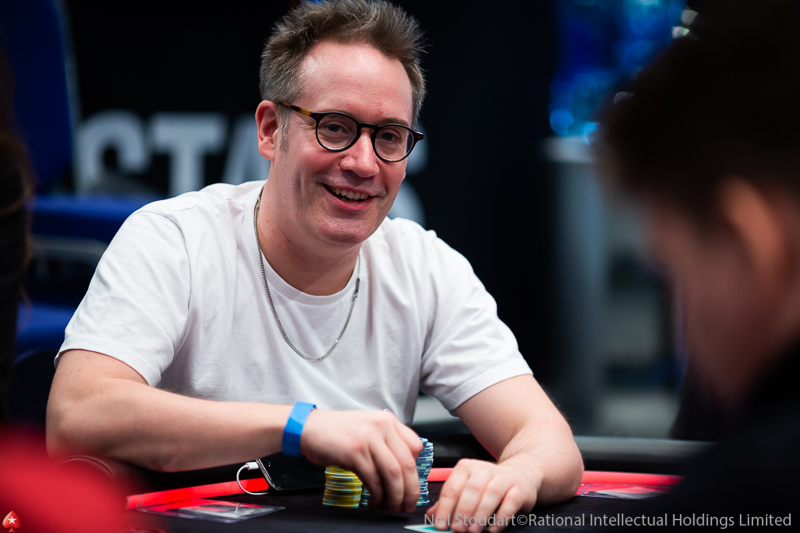

Grafton advises playing numerous smaller tournaments rather than a handful of bigger ones
Of course, if you’re playing recreationally, and you know you can easily afford to play a $100 tournament, and lose that buy-in, there’s nothing wrong with doing that. But you do always need to accept the likelihood that a tournament buy-in is going to vanish, with nothing to show in return.
For cash games, it is only slightly different. Most pros agree that buying in for the maximum allows you to play the game to the best of your abilities. Only with a big stack can you make the right plays based on your reads and your skills, rather than being influenced by the chips in front of you.
However, if you are less confident in a game and want to limit your potential losses, there is nothing wrong with buying in for another, lower amount. You might need to be prepared to get all-in more readily, and know that you may not get full value for your big hands. But the only sure-fire way of not losing money at poker is not to put it on the table in the first place.
If you find yourself making those kinds of calculations, however, you perhaps should think about playing a game with lower blinds, but buying in for the max.
In all scenarios, you also need to think about having buy-ins in reserve to re-enter, should things not go according to plan. We’ve all been there: you’re in a great game but hit a poor run of cards and lose your chips. You want to be able to buy back in, though, and build up a stack again. Make sure you have a few buy-ins spare.
RECAP
To recap, here are the key points regarding buy-ins:
What buy-in tournaments should I play?
If you have a ring-fenced poker bankroll, and are taking the game seriously, play tournaments with a buy-in of no more than 1 percent of your bankroll. If you’re a purely recreational player, who doesn’t have a specific bankroll for the game, just think about what you can comfortably afford to lose, and play tournaments with that level of buy-in. Approximately 90 percent of a tournament field will go home empty handed, and you need to expect that.
How much should I buy in to a cash game?
If you want to play to the best of your abilities, buy in for the maximum. Also have a couple of spare buy-ins ready to go if you have to top up your stack. However, if you have a very tight budget and have strict limits on what you want to play with, either look for a game with lower limits, or buy in closer to the minimum and be prepared to quit if you lose.
In all games, only put on the table what you can comfortably afford to lose.
Back to Top

